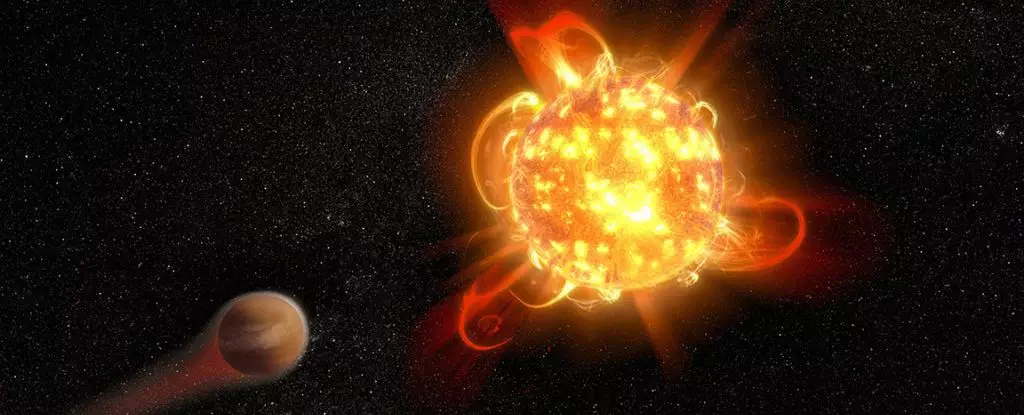M-class stars, commonly referred to as red dwarfs, have captured the attention of astronomers and astrobiologists alike. These stars, which are notably cooler and smaller than our Sun, dominate the Milky Way, comprising approximately 70% of its stellar inhabitants. Their longevity and stability render them enticing candidates for hosting life-sustaining systems, particularly through their potential to maintain planets within their habitable zones. However, the very characteristics that make red dwarfs seem appealing also harbor hidden perils, extensively explored in recent research that challenges our assumptions about these stars and their potential for supporting life.
While the low temperatures and small sizes of red dwarfs might suggest that they are benign cosmic entities, a contrary reality emerges when we consider their propensity for producing stellar flares. These energetic outbursts can unleash a tremendous amount of radiation, raising concerns about their implications for any orbiting planets. Recent findings indicate that these flares emit ultraviolet (UV) radiation at levels far surpassing earlier estimates, hinting at a more chaotic and hazardous environment for potential life forms.
Astrobiologists have speculated that planets within red dwarf systems could offer suitable conditions for life, despite being cooler than Earth. However, the nature and intensity of radiation from stellar flares have prompted a reevaluation of this perspective. Our understanding of the dynamics of habitability must include the harsh realities posed by these violent events, particularly in the context of developing complex biological molecules essential for life.
Traditionally, studies on stellar flares have relied heavily on optical observations, often neglecting the crucial impact of ultraviolet radiation. A recent study utilizing a decade’s worth of data from the now-retired GALEX space telescope has examined UV emissions from 182 flares across various M-class stars. This detailed analysis aims to shed light on how stellar flares contribute to changes in atmospheric conditions on nearby planets, a factor that could dramatically alter their habitability potential.
One startling conclusion drawn from this study is that previous models may have significantly underestimated the prevalence of UV radiation produced by these stellar events. Conventional understanding characterized the radiation emissions from flares using a blackbody distribution, predicting a temperature of around 8,727 degrees Celsius. However, the new research suggests that this model does not accurately represent the emission levels observed, as a staggering 98% of the flares examined displayed UV outputs far exceeding this expectation. This revelation necessitates a deeper exploration into the energetic behavior of red dwarfs, reconsidering the environmental parameters essential for life.
The implications of these findings are profound. While lower concentrations of UV radiation generated by stellar flares might support the synthesis of life-critical organic compounds, greater levels pose significant threats. Excessive UV exposure could facilitate atmospheric erosion, stripping away essential layers like ozone, thereby exposing any potential biological entities to devastating radiation. Consequently, the paradox arises that while red dwarfs might exhibit physical conditions conducive to life—such as temperature and geological stability—their violent behavior creates an inhospitable environment, potentially nullifying these advantages.
The challenge now lies in reconciling the apparent habitability of red dwarf systems with the destructive forces at play. As we continue to expand our search for extraterrestrial life, the search parameters must evolve to incorporate the dynamic realities of M-class stars and their habitability potential. The broader scientific community must recognize that these seemingly stable systems may harbor environments far less pleasant for life than previously believed.
The burgeoning understanding of red dwarfs and their associated flares invites a critical reassessment of our search for life beyond Earth. While M-class stars hold promise as hosts for potentially habitable planets, the nuanced reality of their energetic and complex nature cannot be overlooked. As research continues to unfold, redefining our criteria for habitable environments will be essential in guiding future explorations into the cosmos. The hidden dangers of red dwarfs serve as stark reminders that our universe is a far more intricate web of conditions than it appears at first glance, illuminating just how delicate the balance for supporting life might truly be.



Leave a Reply